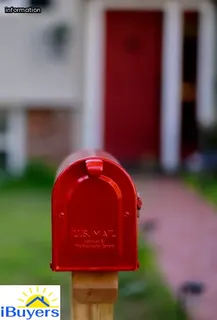A quitclaim deed is a legal document that is used to transfer property from one person or entity to another. In Hawaii, it is a form that must be filled out and filed with the local county office in order to transfer ownership of a house.
This document is important to understand when transferring real estate from one owner to another, as it outlines the rights and responsibilities of both parties involved in the transaction. For example, by signing the quitclaim deed, the seller agrees to relinquish all rights they have to the property being sold while the buyer agrees to accept any existing title defects associated with it.
Before filing a Hawaii Quitclaim Deed Form, it's important for both parties involved in the transaction to understand what they're agreeing to and consider consulting an attorney if needed. Additionally, you will need certain documents such as proof of identification and proof of ownership in order for your application to be approved by your local county office.
Lastly, when filing your Quit Claim Deed Form, make sure that all information provided is accurate and up-to-date before submitting it.

A quitclaim deed is a legal document that transfers ownership of real estate from one person to another. In Hawaii, the document is called by different names or titles depending on the county in which it is filed.
On the island of Oahu, for example, the form is known as an “Affidavit and Conveyance”. On Kauai, it is referred to as a “Deed of Quitclaim”.
The Big Island's version of this document is known as a “Quitclaim Deed”. Maui County uses two documents for this purpose: a “Conveyance” and a “Quit Claim Deed”.
Lastly, Lanai has its own unique version called a “Lanai Quit Claim Deed”. As such, be sure to know what your particular county calls the form before filing with their local recording office.
Additionally, make sure you have all necessary information available before proceeding with filing this type of deed in Hawaii so that there are no delays or problems further down the line when transferring ownership of your house.
Title insurance is a critical component of filing a quitclaim deed for your house in Hawaii. Title insurance protects both the buyer and seller from any issues arising from the transfer of ownership, ensuring that no third party can make a claim to the property after it has been sold.
Before filing for a quitclaim deed, it is important to review the records associated with the title of your home in order to ensure that there are no liens or encumbrances on the property. Once you have verified that the title is clear, you may proceed with the process of filing a quitclaim deed.
In Hawaii, this requires completion of an appropriate form and submission to the county clerk’s office, who will then record it and transfer ownership. In addition to providing legal protection during this process, title insurance also provides financial protection if any claims arise after closing on a property.
It is strongly recommended that you purchase title insurance when filing a quitclaim deed in Hawaii to ensure that potential problems are identified and taken care of before transferring ownership.

When it comes to estate planning, a quitclaim deed is one of the most popular options. A quitclaim deed allows you to transfer ownership of your home in Hawaii without going through a lengthy or expensive process.
It's important to understand the differences between a quitclaim deed and other forms of estate planning deeds so that you can make an informed decision when filing for your house in Hawaii. A quitclaim deed is simpler and faster than other methods, such as a warranty deed or special warranty deed, because it does not guarantee that the title is free from any defects or liens.
Additionally, the process is less expensive than more complex deeds because no title search is required. With a warranty deed or special warranty deed, you must search public records to ensure there are no claims against the property before transferring ownership.
On the other hand, with a quitclaim deed, you are only transferring whatever rights you have to the property, which does not include any guarantees about its condition. In addition, with a quitclaim deed in Hawaii, you will also need witness signatures and notarization in order to complete the transfer of ownership – something that may not be necessary with other types of estate planning deeds.
Ultimately, understanding the differences between these deeds can help you determine which option is best for your specific needs when filing for your house in Hawaii.
Filing a quit claim deed for a house in Hawaii is an important decision and understanding the common applications of Hawaii quitclaim deed forms is essential. The most common use of these forms is to add or remove someone from the ownership of a property.
A quitclaim deed can be used to transfer ownership from one person to another, add or remove a spouse, transfer property between family members, or add or remove co-owners. When transferring ownership from one person to another, both parties must agree on the terms of the transaction and sign the deed form before it can be filed with the county recorder’s office.
In addition, when transferring property between family members, legal documents such as wills or trusts must be presented along with the deed form. Lastly, if more than two people are involved in an ownership change, all parties will need to sign off on the agreement prior to filing with the county recorder’s office.

Filing a quit claim deed form in Hawaii is an important step when transferring real estate ownership. The process requires you to fill out the necessary paperwork, obtain a notary public, and file your documents with the county recorder.
To get started, first obtain the correct quitclaim deed form for Hawaii from either a title company or online. You will need to provide details about both the grantor (the current owner of the property) and grantee (the new owner).
Next, have all parties sign the document before a notary public who will witness and certify it. Finally, take your signed documents to your local county recorder's office where they'll be recorded in the property records.
It's important to note that if you are filing a joint quitclaim deed, both spouses must be present for signing and notarization. Following these steps ensures that your quitClaim deed is properly filed in Hawaii.
Filing a quitclaim deed in Hawaii requires you to be aware of the important legal requirements and considerations when drafting the document. In order to file properly, it is essential to ensure that all of the parties involved are legally competent and have provided their signature on the deed.
Additionally, you must make sure that all information provided on the deed is accurate and up to date. Furthermore, any paperwork related to the deed must also be filed with the state.
It is also important to understand that while filing a quitclaim deed can transfer ownership of property, it does not provide any warranties or guarantees about its title. Therefore, it is wise to research the property’s history before signing a quitclaim deed to avoid any potential issues down the road.
Lastly, if you are transferring real estate in Hawaii through a quitclaim deed, you must pay the appropriate filing fees and make sure that your documents meet all state regulations for such transfers.

Writing and filing a quitclaim deed in the state of Hawaii is an important step when transferring ownership of real property. The process can be complicated and requires close attention to detail, so it is important to understand the relevant laws, regulations, and forms.
The first step to filing a quitclaim deed in Hawaii is to obtain the proper forms from the county recorder's office. These forms must be completed accurately and signed by both parties involved in the transfer.
Once they are filled out correctly, they must be notarized by a certified public notary or other authorized individual before submitting them to the county recorder's office. Supporting documentation may also be required depending on the type of transfer, such as surveys or title reports.
After all documents have been submitted to the county recorder's office, they will record them in the official records and return them with a certificate of recording. This certificate should be kept for future reference as proof that ownership has been transferred according to Hawaii law.
A quitclaim deed is an important document to have when transferring real estate. It's important to understand the steps necessary for filing a quitclaim deed in Hawaii.
To get started, it’s wise to review an example of a Hawaiian quitclaim deed sample. The sample will provide insight into what the form looks like and information that must be included on the document.
This includes details such as who the grantor and grantee are, what property is being transferred, and any additional information that must be included in order to make the transfer complete. Additionally, Hawaii requires certain acknowledgments from notaries or attorneys as part of the process.
When completing a quitclaim deed for a home in Hawaii, you should also check with your local Clerk of Court office to ensure you are fulfilling all requirements related to filing and recording a quitclaim deed in your state. Knowing how to file a quitclaim deed correctly can save time and money down the road when transferring ownership of property.

Finding the right forms for filing a quit claim deed for your house in Hawaii can be confusing. Fortunately, there are free online resources available with Hawaiian quit claim deed forms that you can download and print.
Before you start the process, it's important to understand what a quit claim deed is and how it works. A quit claim deed transfers ownership of real property from one party to another without any warranties or guarantees.
It's simply a way to transfer ownership without having to go through the lengthy process of selling a house. After you have determined whether or not a quit claim deed is necessary for your situation, you can begin searching for free forms online.
There are many websites that offer Hawaiian quit claim deed forms, but make sure you choose one from a reputable source so that it will be legally binding in Hawaii. Once you have downloaded and printed the form, follow the instructions carefully and fill out all of the required information accurately before signing and submitting it to the court.
Understanding the necessary information required on a Hawaiian Quit Claim Deed is key to successfully filing your deed. It is important to know the names of all parties involved and make sure they are correctly listed on the deed.
The grantor, who is relinquishing rights to the property, must include their name as well as their address, while the grantee must provide their name and address. Both parties will also need to provide their Social Security numbers.
It is also important to identify the location of the property. This includes noting county, state, and parcel number if applicable.
All other details such as legal description of the property need to be provided in order for filing to be successful. Lastly, signatures from both parties are necessary in order for filing to be complete; it is recommended that they sign in front of a notary public or other qualified witness in Hawaii.

Filing a quit claim deed for a house in Hawaii is an important process that requires understanding of the necessary forms and regulations. It is important to research local regulations, as well as the specific forms needed for your particular situation.
The primary form required for filing a quit claim deed in Hawaii is the “Transfer on Death Deed” form, which lists the names of all parties involved in the transfer. The document must be notarized by an authorized official, such as a lawyer or public notary.
Additionally, it must be filed with the appropriate county records office where the property is located. Once all documents are completed and filed with the county records office, it is essential to check on the status periodically to ensure that all paperwork has been processed correctly and that all parties have received notification of completion.
Furthermore, it is important to make sure that any liens or other encumbrances related to the property have also been addressed prior to filing a quit claim deed. By following these tips and completing proper research, you can easily file a quit claim deed for your Hawaiian house transfer quickly and efficiently.
Filing a quit claim deed for your house in Hawaii is a relatively simple process, but it is important to understand the state’s property transfer tax regulations. In Hawaii, real estate transfers are subject to property transfer taxes which must be paid before the deed can be filed with the county. Generally, the amount of tax due is equal to
1% of the value of the real estate being transferred. The buyer and seller both may be responsible for paying the tax; however, it can sometimes be negotiated between the two parties that one or the other will bear responsibility. Additionally, if an exemption applies, no taxes will be due at all. Exemptions include transfers between spouses or domestic partners, transfers resulting from death and certain transfers involving trust funds or guardianships. Before filing a quit claim deed for your house in Hawaii, it is essential to determine who will pay any applicable taxes and whether any exemptions apply to reduce or eliminate them altogether.

For those who are looking for an easier way to file a quit claim deed for their house in Hawaii, utilizing e-signatures for electronic filing can be an excellent solution. This online method of filing allows individuals to quickly and securely submit their documents without having to visit a physical office.
Depending on the county, it may even be possible to electronically record the deed at the same time as the filing. In order to use this service, registrants must ensure that they have all of the required information filled out accurately and completely before submitting.
Additionally, they should make sure that they understand any applicable fees and timelines so there are no surprises after submission. Electronic filing offers convenience and accuracy in processing Hawaiian quit claim deeds — making it more desirable than traditional methods of paper filing.
Filing a Quit Claim Deed for your house in Hawaii can be a quick and straightforward process, but it is important to understand the potential benefits and drawbacks of using this type of deed before doing so. A Quit Claim Deed is used to transfer interest or title in a property from one person to another without warranties or guarantees.
This allows for faster transfers than other deeds, but it also means that the buyer may not be able to rely on guarantees from the seller. On the other hand, using this type of deed can help save time and money as compared to longer more complicated transfers such as an Ownership and Encumbrance Report (OER).
Other benefits include avoiding title insurance costs associated with traditional deeds, as well as simplified paperwork requirements. While there are many advantages to filing a Quit Claim Deed in Hawaii, there are also some risks; it's important to research all the details before making any decisions.
Additionally, if you are uncertain whether or not this type of deed is right for your situation, consulting with a real estate attorney or professional can help provide additional clarity. Ultimately, understanding both sides of the equation will help ensure that you make an informed decision when transferring your property in Hawaii.

For Hawaiian quit claim deeds, there are certain statutory time frames that must be followed in order to properly file and record the relevant documents. In Hawaii, the applicable statute of limitations for recording a quit claim deed is three years, which is how long one has to record the document after it has been created.
Additionally, a quit claim deed must be signed and notarized before it can be filed with the county recorder's office. This typically takes anywhere from two to four weeks depending on when the document was signed.
Once filed, the county recorder will process the filing and return a copy to the grantor within 30 days of receipt. It is important to note that if any of these statutory time frames are not met, then the document may be deemed invalid and thus not legally binding.
Therefore, it is crucial for individuals looking to file a quit claim deed for their house in Hawaii to adhere closely to these timelines in order to ensure their rights are protected under law.
When considering filing a quit claim deed for your house in Hawaii, it is important to prepare yourself financially beforehand. You should start by gathering all of the relevant financial documents such as bank statements and income records.
Additionally, you should be aware of any outstanding mortgages or loans that may affect the process. It is also important to calculate an accurate estimation of your costs involved with the filing process, including taxes and fees associated with transferring property ownership.
Make sure to also have a clear understanding of the terms and conditions of the agreement before signing anything. Lastly, it is recommended to consult with a lawyer or other legal professional about any questions you may have about the quit claim deed process in Hawaii.

When filing a quit claim deed for a house in Hawaii, it is important to seek professional legal advice in order to ensure the process runs smoothly. Legal professionals with experience in Hawaiian real estate law can provide valuable guidance and help navigate the complexities of filing a quit claim deed.
They can advise on the necessary paperwork, the steps involved in transferring ownership, and any other related issues. Additionally, they can help protect against potential risks or liabilities that may arise from the transfer of property.
Furthermore, a professional lawyer or attorney will be able to provide up-to-date information about any current or changing laws that may affect the process of filing a quit claim deed in Hawaii. Utilizing the services of an experienced legal professional is essential when dealing with matters as complex as transferring ownership of property in Hawaii, so consulting such an expert is highly recommended when filing a quit claim deed for your house.
When it comes to transferring property in the state of Hawaii, a quit claim deed is often the first document that comes to mind. However, depending on your situation, there may be other options available as well.
For instance, if you are transferring real estate between spouses or close relatives, you can use a “Transfer on Death” form instead of a quit claim deed. This document allows you to specify who will receive the property after your death without having to go through probate court.
Another option is to use an “Affidavit of Heirship” form if the transfer is taking place within a family and there is no will or title involved. The affidavit provides proof that the transferor has legal ownership of the property and can be used when filing documents with county offices such as land records and tax assessors.
Lastly, if you are transferring real estate between two business entities, then it may make sense to use a warranty deed instead of a quit claim deed. Warranty deeds provide further assurance by guaranteeing that the title being transferred is free from any liens or encumbrances.
While these alternative solutions may not be ideal for every situation, they certainly offer some unique advantages over using a quick claim deed alone in certain circumstances.

Filing a quit claim deed in Hawaii requires preparation and knowledge of the process. To make it easier and faster, it is important to understand the requirements associated with filing a quit claim deed in Hawaii.
It is necessary to complete the proper paperwork and have the forms notarized before submitting them to your local county office. Before you begin, be sure to become familiar with the terminology used in Hawaiian conveyancing law, including words like 'hakau', 'kuleana', and 'ahupua'a'.
Additionally, you will need to gather all relevant documentation such as proof of ownership or title. This can include documents such as deeds, leases, mortgages, judgments or liens that affect the property.
Once prepared with these items and documents, you can proceed with submitting your quit claim deed for processing at your local county office where it will be recorded after review. When filing a quit claim deed in Hawaii, it is also important to remember that fees are due when filing the document so be sure to bring appropriate payment methods when making your submission.
Following these steps will help ensure that this process goes as quickly and smoothly as possible.
Transferring ownership of a property in Hawaii is a relatively simple process with the filing of a Quit Claim Deed.
This type of deed is used to transfer title or interest in real property from one person to another without providing any warranties or guarantees about the property.
To file a Quit Claim Deed for your house in Hawaii, you will need to obtain the deed from an attorney, provide basic information about yourself and the other parties involved, pay associated fees at the recorder's office, and record the deed.
Once recorded, the Quit Claim Deed will be legally binding and you will have officially transferred ownership of your house in Hawaii.

When it comes to filing a Quit Claim Deed for your house in Hawaii, it is important to understand the difference between a Quit Claim Deed and a Warranty Deed. A Quit Claim Deed transfers the interest of a property owner without warranting or guaranteeing that the person transferring the deed holds any legal title or interest in the property.
This is typically used when one spouse wants to transfer their interest in a jointly owned property to another spouse. A Warranty Deed, on the other hand, guarantees that the person transferring has good and valid title to the property and promises to defend against any claims made against it.
In Hawaii, both types of deeds must be signed in front of two witnesses who can be either family members or unrelated parties. In addition, both deeds must include an address where all notifications should be sent, such as tax bills or notices from other public agencies.
Both deeds also need to be notarized before they can take effect.
Filing a quit claim deed in Hawaii can be a lengthy process, but it is possible to complete the filing quickly. Generally speaking, the length of time it takes for a deed to be recorded in Hawaii depends on how many documents are involved and how long it takes to file them with the necessary agencies.
The amount of time also varies by county. In most cases, however, recording typically takes between two and four weeks after all documents have been filed.
To ensure that your deed is recorded as soon as possible, you should make sure all paperwork is complete before submitting it to the recorder's office in your county. Additionally, some counties may offer online filing services which can further speed up the process.
All in all, understanding how long it will take for your quit claim deed to be recorded in Hawaii is an important step towards completing your house sale or transfer more quickly.
Recording a quit claim deed in Hawaii is a straightforward process. The deed must be signed by all parties, notarized, and then submitted to the Hawaii Bureau of Conveyances.
To file the deed, start by obtaining the appropriate document from an attorney or title company. Once completed, take it to be notarized by an authorized official.
The notary will need to witness each signature on the document and place their own stamp of approval on the page. After that, you'll need to get a copy of the document and submit it along with the necessary filing fee and any other paperwork required by your county recorder's office.
Once approved, you can expect to receive confirmation that your deed has been recorded in Hawaii's public records system.
A: To complete a quit claim deed on a house in Hawaii, you must first gather all necessary documents related to the property transaction. Next, you must complete the quit claim deed form. Then, both parties must sign the quit claim deed in front of a notary public. Finally, the quit claim deed must be recorded with the county clerk.